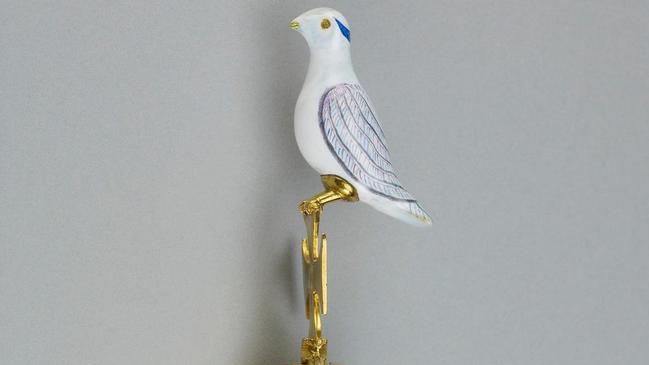Camilla faces backlash over ivory coronation sceptre
Camilla will court controversy by brandishing the ivory rod, despite both Charles and Williams speaking out against illegal wildlife products.

Queen Camilla has already avoided controversy by choosing not to use a crown embellished with the Koh-i-noor diamond at the coronation.
However, she may find herself facing criticism from wildlife activists instead when she is presented with a sceptre made of ivory at the ceremony at Westminster Abbey next month.
Palace sources have confirmed that Camilla will brandish the ivory rod with dove, which was made for Mary of Modena when she was crowned alongside her husband, James II, in 1685.
There had been speculation that the rod – one of two sceptres used by the Queen at the coronation – would not feature because of sensitivities about the use of ivory.
The Prince of Wales has been a vocal critic of the ivory trade and other illegal wildlife products. William reportedly once said that he would like all the ivory owned by Buckingham Palace to be destroyed.
However, a palace source said that it was inevitable that a collection as old and large as the crown jewels would contain some ivory, reflecting the differing values of a bygone era.
The decision to use the sceptre, which was made by the royal goldsmith Sir Robert Vyner, shows that the palace believes there are times when tradition must take precedence over modern views.
The sceptre, which is about 3ft long, is made of three sections joined by gold collars. Symbolising equity and mercy, it is topped by a dove with folded wings, which represents the Holy Spirit.
On the morning of the Coronation, Their Majesties will travel from Buckingham Palace in The King’s Procession to Westminster Abbey in the Diamond Jubilee State Coach – which was created in 2012 for Queen Elizabeth II’s Diamond Jubilee.
— The Royal Family (@RoyalFamily) April 9, 2023
[2/6] pic.twitter.com/ploIh3s4Ea
Its use was confirmed as part of Buckingham Palace’s announcement of the regalia that will be used at the service, from the Sovereign’s Ring to St Edward’s Crown. They also include the orb, two sceptres, three swords, the armills, the spurs, the coronation spoon and the ampulla.
Experts have admitted that some of the royal treasures are so old that how they became a part of the royal regalia has been lost to memory.
They include the golden St Edward’s Staff, which was created by Vyner in 1661 for the coronation of Charles II after the bulk of the previous collection was melted down under Oliver Cromwell, and derives from an earlier staff which was associated with Edward the Confessor. Charles Farris, public historian for the history of the monarchy at Historic Royal Palaces, said: “This is rather an enigmatic object.”
He added: “When the crown jewels were remade, Charles II was being advised what he might need. When it came to the staff, no one was quite sure what it was for and they almost didn’t have one at all. But Charles II said ‘No, I want the full set,’ and it was made.”
The Earl Marshal is responsible for planning and organising the Coronation.
— The Royal Family (@RoyalFamily) April 9, 2023
Here, he explains what each element of the procession will look like.
🔗 https://t.co/yfbXJEEV2d
[6/6] pic.twitter.com/mFj2TweiKq
The oldest piece in the collection is the spoon, which is used to hold the oil with which the King is anointed. Made of gold, it probably dates back to the 12th century. Kathryn Jones, senior curator of decorative arts at the Royal Collection Trust, said: “It’s the only real great survivor of the medieval regalia. Interestingly, like St Edward’s Staff we don’t know its original purpose. It was listed among the regalia in 1349. But stylistically it dates earlier than that, and may have been supplied to either Henry II or Richard I. It clearly had a ceremonial use, and certainly since the early 17th century it has been used for the purpose of anointing.”
When the rest of the regalia was destroyed in 1649, the spoon escaped “because nobody quite understood its purpose”, she said. It was sold to a collector who looked after Charles I’s wardrobe but when Charles II was restored to the throne, it was returned to the crown.
Another mystery is what the original version of St Edward’s Crown looked like. The version with which the King will be crowned dates from 1661. Farris said it replaced an earlier crown said to have belonged to Edward the Confessor. He added: “We don’t actually know what it looked like, which is rather remarkable considering it’s one of the most famous objects in royal history. But it was said to have been used from at least the reign of King Henry III.”
The Times



To join the conversation, please log in. Don't have an account? Register
Join the conversation, you are commenting as Logout